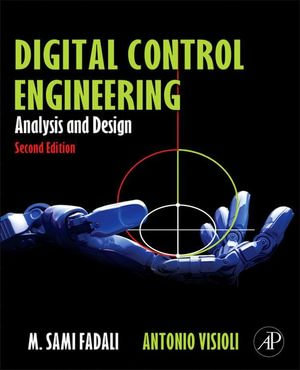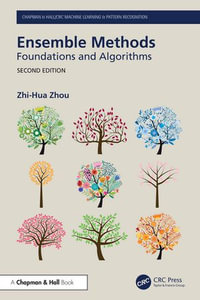
eTEXT
Digital Control Engineering
Analysis and Design
By: M. Sami Fadali, Antonio Visioli
eText | 21 August 2012 | Edition Number 2
At a Glance
eText
$117.95
Instant online reading in your Booktopia eTextbook Library *
Read online on
Not downloadable to your eReader or an app
Why choose an eTextbook?
Instant Access *
Purchase and read your book immediately
Read Aloud
Listen and follow along as Bookshelf reads to you
Study Tools
Built-in study tools like highlights and more
* eTextbooks are not downloadable to your eReader or an app and can be accessed via web browsers only. You must be connected to the internet and have no technical issues with your device or browser that could prevent the eTextbook from operating.
Fadali and Visioli cover analysis and design of digitally controlled systems and describe applications of digital controls in a wide range of fields. With worked examples and Matlab applications in every chapter and many end-of-chapter assignments, this text provides both theory and practice for those coming to digital control engineering for the first time, whether as a student or practicing engineer.
Extensive Use of computational tools: Matlab sections at end of each chapter show how to implement concepts from the chapter.
Frees the student from the drudgery of mundane calculations and allows him to consider more subtle aspects of control system analysis and design.
An engineering approach to digital controls: emphasis throughout the book is on design of control systems. Mathematics is used to help explain concepts, but throughout the text discussion is tied to design and implementation. For example coverage of analog controls in chapter 5 is not simply a review, but is used to show how analog control systems map to digital control systems.
Review of Background Material: contains review material to aid understanding of digital control analysis and design. Examples include discussion of discrete-time systems in time domain and frequency domain (reviewed from linear systems course) and root locus design in s-domain and z-domain (reviewed from feedback control course).
Inclusion of Advanced Topics
In addition to the basic topics required for a one semester senior/graduate class, the text includes some advanced material to make it suitable for an introductory graduate level class or for two quarters at the senior/graduate level. Examples of optional topics are state-space methods, which may receive brief coverage in a one semester course, and nonlinear discrete-time systems.
Minimal Mathematics Prerequisites
The mathematics background required for understanding most of the book is based on what can be reasonably expected from the average electrical, chemical or mechanical engineering senior. This background includes three semesters of calculus, differential equations and basic linear algebra. Some texts on digital control require more mathematical maturity and are therefore beyond the reach of the typical senior.
Read online on
ISBN: 9780123983244
ISBN-10: 012398324X
Published: 21st August 2012
Format: ePUB
Language: English
Number of Pages: 600
Publisher: Elsevier S & T
Edition Number: 2
You Can Find This eBook In
This product is categorised by
- Non-FictionEngineering & TechnologyElectronics & Communications EngineeringElectronics EngineeringAutomatic Control Engineering
- Non-FictionEngineering & TechnologyTechnology in GeneralEngineering in General
- Non-FictionEngineering & TechnologyMechanical Engineering & MaterialsMechanical Engineering
- Non-FictionComputing & I.T.Computer ScienceSystems Analysis & Design
- Non-FictionComputing & I.T.Computer Programming & Software DevelopmentProgramming & Scripting Languages
- Non-FictionComputing & I.T.Graphical & Digital Media ApplicationsComputer-Aided Design CAD
- Non-FictionEngineering & TechnologyElectronics & Communications EngineeringElectronics Engineering























